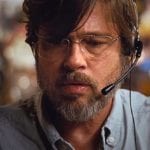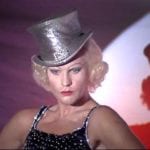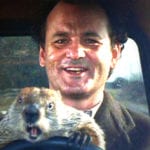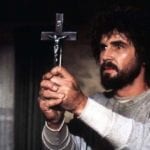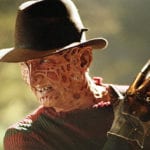 History
History  History
History  Technology
Technology Top 10 Everyday Tech Buzzwords That Hide a Darker Past
 Humans
Humans 10 Everyday Human Behaviors That Are Actually Survival Instincts
 Animals
Animals 10 Animals That Humiliated and Harmed Historical Leaders
 History
History 10 Most Influential Protests in Modern History
 Creepy
Creepy 10 More Representations of Death from Myth, Legend, and Folktale
 Technology
Technology 10 Scientific Breakthroughs of 2025 That’ll Change Everything
 Our World
Our World 10 Ways Icelandic Culture Makes Other Countries Look Boring
 Misconceptions
Misconceptions 10 Common Misconceptions About the Victorian Era
 Mysteries
Mysteries 10 Strange Unexplained Mysteries of 2025
 History
History 10 Things You Didn’t Know About the American National Anthem
 Technology
Technology Top 10 Everyday Tech Buzzwords That Hide a Darker Past
 Humans
Humans 10 Everyday Human Behaviors That Are Actually Survival Instincts
Who's Behind Listverse?

Jamie Frater
Head Editor
Jamie founded Listverse due to an insatiable desire to share fascinating, obscure, and bizarre facts. He has been a guest speaker on numerous national radio and television stations and is a five time published author.
More About Us Animals
Animals 10 Animals That Humiliated and Harmed Historical Leaders
 History
History 10 Most Influential Protests in Modern History
 Creepy
Creepy 10 More Representations of Death from Myth, Legend, and Folktale
 Technology
Technology 10 Scientific Breakthroughs of 2025 That’ll Change Everything
 Our World
Our World 10 Ways Icelandic Culture Makes Other Countries Look Boring
 Misconceptions
Misconceptions 10 Common Misconceptions About the Victorian Era
 Mysteries
Mysteries 10 Strange Unexplained Mysteries of 2025
10 Films That Were Rescued by the Editor
Whether it is the producer’s work to bring a production together, the cinematographer’s careful selection of palette and lighting, or the writer’s painstakingly crafted script, the efforts of so many key figures in cinema often go woefully unappreciated.
However, few film industry professionals are more underappreciated than the editor, whose job is to build the end product we all enjoy. Were it not for the lowly editor, some great and treasured films might never have made it onto our screens, or, if they did, they might never have returned from the unforgiving limbo of Blockbuster’s bargain bin.
With hundreds of millions of dollars being plowed into big studio movie projects these days, producers and directors tend to be a little more firm on what goes into their films from start to finish. But it wasn’t always like this, and many of our favorite films began life in far worse shape than they ended up…
So let’s look at ten famous films that were rescued by the likely unknown and often overlooked editor.
Related: Top 10 Behind The Scenes Facts About Spielberg Movies
10 Easy Rider (1969)
Everyone’s favorite American road movie, Easy Rider, puts future superstars Peter Fonda, Dennis Hopper, and Jack Nicholson front and center as they encounter drugs, xenophobia, and the looming presence of the establishment in the dying days of the sixties.
Fonda conceived of the story in the middle of the night, Hopper signed on to direct straight away, and they got to it. Unfortunately, being members of the counterculture themselves, neither had the commercial wherewithal to be ruthless in the cutting and editing of a mainstream, theater-friendly feature. Inspired by auteurs like Stanley Kubrick, Hopper’s first cut was two hours and forty-five minutes long and jumped wildly back and forth through the story; not such a not an easy sell for a hippie biker film with an unconventional structure and no plot to speak of.
The studio drafted director Henry Jaglom to collaborate with editor Donn Cambren to get the film down to the 95-minute mark. The result was a bona fide piece of cultural and cinematic history that will live on in the cinematic canon forever.[1]
9 Star Wars (1977)
For years, fans of the Star Wars saga have been desperately trying to locate unedited cuts of the original trilogy, feeling that George Lucas’s tinkering and CGI interference on every re-release muddied the films’ original vision. But if Lucas’s original editor, John Jympson, had been allowed to run with his vision for the first entry in the franchise, there may never have been a franchise at all.
After an unflattering response from Brian De Palma and Steven Spielberg to a screening of Jympson’s work, Lucas brought in an editing team comprising Paul Hirsch, Marcia Lucas, and Richard Chew. They chopped limbs off the galaxy far, far away. These changes included editing out several sizeable chunks of the first act to focus in a linear fashion on the space conflict, the droids, and then Luke Skywalker (Mark Hamill)—a structure that has been mimicked in mainstream cinema ever since.
Thanks to De Palma, it also included the introduction of the iconic opening crawl, which has been climbing into space for 45 years now and shows no sign of stopping.[2]
8 Justice League (2021)
It is no secret that 2017’s DC Comics ensemble piece Justice League was beset by difficulties throughout production, editing, and release, the focal point of which was that Zack Snyder had to leave the feature during production. He was swiftly replaced by Joss Whedon, but Whedon’s tone and approach clashed with Snyder’s vision and led to a choppy post-production process.
The film was a flop, the fans felt cheated, and a grassroots campaign began almost immediately for a “Snyder cut.” It took three years for Warner Bros. to recognize the earning potential of such a move, but recognize it they eventually did.
Snyder had been working on his own cut in private with editor Carlos Castillo, and HBO Max—Warner’s VOD arm—rounded it off, scored the additional footage, and finished the effects. This resulted in the re-minted Zack Snyder’s Justice League, which, contrary to the received wisdom on editing films, doubled the original runtime to 242 minutes and won the hearts and minds of fans across the globe.[3]
7 Annie Hall (1977)
The 1970s comedy-drama Annie Hall is Woody Allen’s most popular film by a country mile. However, in a comedy of errors befitting Allen’s style, it was several different films before it was the one we know.
Editor Ralph Rosenblum took on Allen’s first cut aiming to add length, humor, and a sense of life. However, Rosenblum’s edit left the film’s writer, Marshall Brickman, feeling that the scope of the feature was too wide and untamed to present as a single, coherent story. Reckoning the film was so haphazardly plotted that scenes could be chopped and changed at will, Rosenblum continued working on it with Wendy Greene Bricmont. But by the time they were finished, the film only ran to 75 minutes, considerably short of the expected 90 minutes for a standard feature.
With the producers getting antsy, they continued sculpting the existing footage right up until the first proper test screening. This included narration that was recorded and added just two hours before the film was due to go out. Nevertheless, they pulled it off, and Allen has made a new film nearly every single year since.[4]
6 The Thin Red Line (1998)
Terrence Malick is known for his unorthodox approach to editing, eschewing narrative clarity in favor of spontaneous sequences, thematic overtures, and a distinctly impressionistic, arthouse sensibility. But there was a time when his films trod a slightly more conventional path, thanks to a team of dedicated editors, such as his late-nineties WWII epic The Thin Red Line.
Malick’s editing team, Leslie Jones and Billy Weber, wrangled the million and a half feet of film he shot down to an initial five-hour cut, which they had to force the director to watch. The trio then spent the next 13 months of post-production engaged in a tortuous editing process, eventually involving a fourth editor, Saar Klein. With Malick’s refusal to see the film as a whole, insisting on emotions and sensations taking precedence over structure and plot, Klein, Jones, and Weber worked around him, hammering each scene into place to create a digestible whole.
While Malick’s subsequent films have untethered further from typical editing conventions, becoming ever-more niche and splitting audiences down the middle, Klein, Jones, and Weber’s input enabled The Thin Red Line to become a critical darling and fan favorite.[5]
5 Men in Black (1997)
Barry Sonnenfeld, director of the original Men in Black trilogy, has seen his fair share of big-budget success stories over the years, but few as turbulent as the production and editing for the very first Men in Black back in the late 1990s.
A mere two weeks away from finishing the movie, when Sonnenfeld was ready to record the score, Sony got in touch to say they felt the story was too complicated and were looking to change the entire plot. As production companies on blockbuster pictures tend to exert a lot of creative control over the final product, unwilling to let artistic integrity get in the way of their investment, editor Jim Miller had to re-shape the film to the studio’s wishes. Thus, scenes were re-ordered, additional parts were added, and subtitles for when the aliens spoke were modified to suit the new direction.
Whatever Sony’s motives, the gambit paid off. The film took in nearly $600 million at the box office, made Smith a household name worldwide, and spawned an animated series, three sequels, six video games, and branded tie-ins galore.[6]
4 First Blood (1982)
If Rocky is the film that made Sylvester Stallone, First Blood is the film that made him an action hero. Now commonly known as Rambo: First Blood, the film successfully established a five-film franchise spanning four decades and helped Sly build a future in cheesy, over-the-top, action genre classics.
But First Blood hit many hurdles on its way to the screen, not least in the cut. Initially coming in at around three and a half hours long, it was baggy, boring, and neither Stallone, his agent, or the studio was happy with it. It was so bad, in fact, that Stallone tried to buy the movie so that he could destroy it, believing it might spell the end of his career.
However, thanks to this early intervention, the feature was edited down to a slender 93 minutes (around half the original runtime), including a drastically altered ending that left Rambo’s fate open. It went on to make $125 million at the global box office against a $14 million budget.[7]
3 The Limey (1999)
Neo-noir crime thriller The Limey represents a curious middle period for director Steven Soderbergh, in which he was transitioning from the independent deep cuts that made his name, like Kafka, and Sex, Lies, and Videotape, into big-budget, mainstream features that would ensure his longevity, like Ocean’s Eleven.
After filming and cutting The Limey from Lem Dobbs’s conventionally structured screenplay, Soderbergh and his editor, Sarah Flack, realized they had a dud on their hands. Thus, the pair set about rebuilding the film from scratch, opting for a non-linear approach that allowed them to completely remix and redefine the feature. During this process, they were able to paste over the cracks, build upon the film’s core concepts of the past and memory, and create the kind of narrative and thematic tension the original cut had been sorely missing.
While The Limey was only given a limited theatrical release, it has come to be regarded as a cult classic in the years since… and an essential piece in the puzzle of Soderbergh’s filmography.[8]
2 Blade Runner (1982)
Adapted from Philip K Dick’s dark sci-fi novel Do Androids Dream Of Electric Sheep?, Blade Runner was seemingly doomed from the start. Tensions between Scott and lead actor Harrison Ford made on-set work difficult, and squabbling between Scott and the studio led to a theatrical cut that nobody was really happy with.
The picture failed to make its production budget back in theaters and would have been forgotten if it hadn’t been for a series of fortunate events in the years to come. In 1990, a rough cut of the film was screened by accident at the Fairfax Theatre in Los Angeles, sporting a whole host of differences from the theatrical cut. So positive was the audience’s reaction to it that Warner Bros. ordered a new cut supervised by archivist Michael Arick and aligned with Scott’s original notes, direction, and editing.
The director’s cut was released in 1992, having altered several key facets of the film, including Ford’s lackluster narration. It subsequently achieved mainstream success and widespread critical acclaim, with this version recognized as the definitive edit.[9]
1 Jaws (1975)
Jaws is recognized as the film that made Steven Spielberg’s career and created the blockbuster genre, becoming the very first film to earn $100 million at the box office. But it easily might not have been.
By far, the most successful element of the film is the scarcity of its villain—the shark—who enjoys roughly four minutes of screentime in a two-hour picture. And while this may just seem shrewd filmmaking designed to build tension, it was not by design. The props the production team used for the shark were not what we are used to today, and the reels they had of it looked horribly fake. Luckily, editor Verna Fields was on-hand.
Fields made the executive decision to remove any and all footage showing the whole creature, relying on sequences of churning water, semi-submerged fangs and fins, and, of course, the classic POV shark shot to sell it.
By all accounts, she not only saved the film but transformed horror cinema. Jaws took popular horror filmmaking away from the likes of the cheesy Hammer horror flicks and laid the groundwork for dark creature features like Alien and the slasher boom, beginning with Halloween (despite how much John Carpenter insists he doesn’t like Spielberg).[10]



